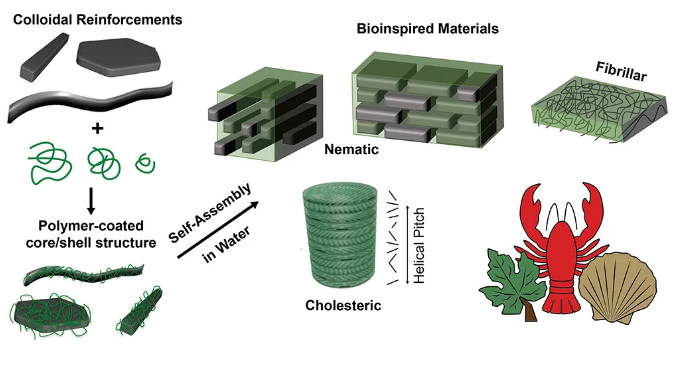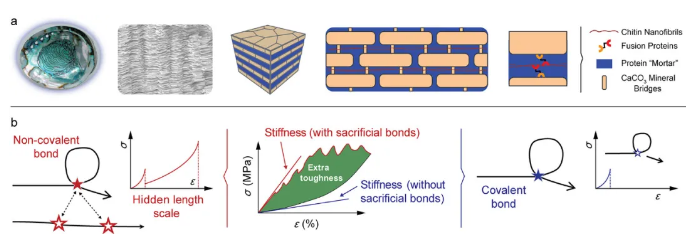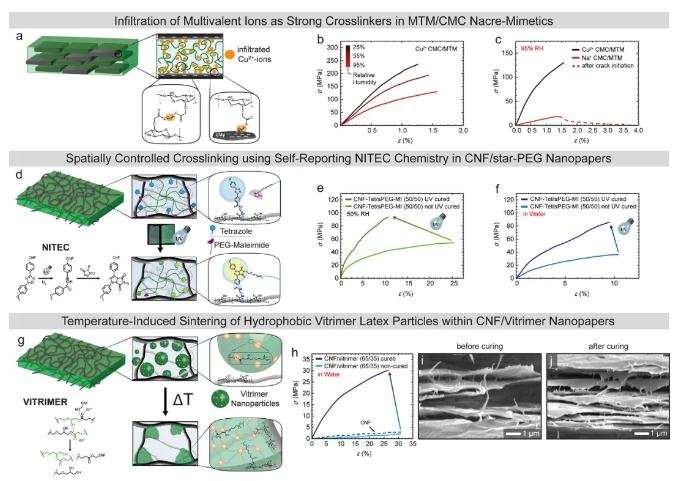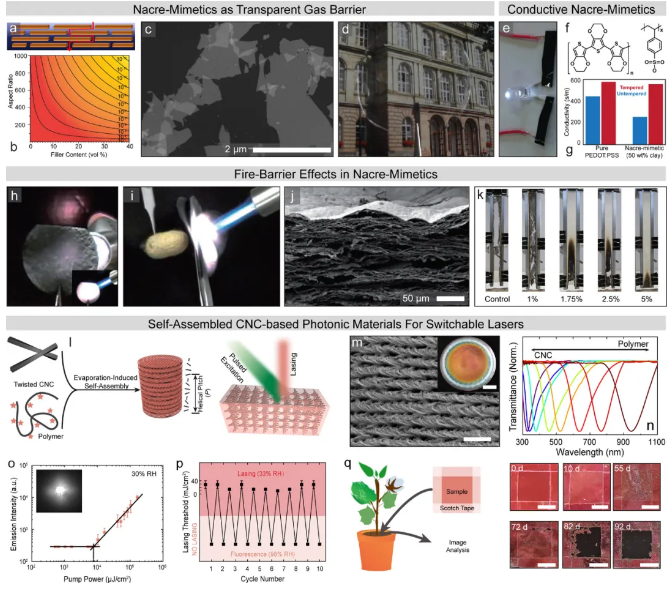Acc. Chem. Res. Review: Self-assembled bionic nanocomposites
Biomimetic materials engineering can be used to design advanced functional materials in many scientific fields from wetting behavior to optical and mechanical materials. Biomechanical materials are particularly enlightening. They are assembled from a limited set of building materials at room temperature and grown in water, and have a unique combination of stiffness, strength and toughness, and lightness. For example, some natural materials such as wood, nacre, crustacean skin and spider silk. The precise arrangement of the components and the balanced molecular energy dissipation mechanism can overcome the shortcomings of individual components and lead to materials with excellent synergistic properties beyond additives. They constitute the future structural material engineering paradigm in terms of molding and properties, that is, the use of sustainable building components and energy-saving approaches, as well as the realization of new high-performance and high-performance materials, and the improvement of energy efficiency in mobile technologies. Lightweight structural materials.
In view of this, Andreas Walther of the University of Freiburg in Germany summarized the research progress of the research team in the design of self-assembled bionic materials with mechanical high-performance structures and new versatility in the past ten years.

Article points
1) The author first outlines the definition of biomimetic nanocomposites and their self-assembly in them, and then conducts in-depth discussions to clarify mechanical properties and rational design to improve mechanical properties. Special emphasis is placed on materials formed on high-proportion reinforcements, and precise functional polymers that use self-assembly to build ordered structures, and detailed descriptions of how to design soft polymer phases based on thermomechanical properties and sacrificial supramolecular bonds.

2) The author focuses on nano-scale reinforcement materials, such as nanoclay and nanocellulose, which lead to a high content of internal interfaces and intercalated polymer layers that will experience nano-constraints. Both of these aspects pose basic challenges to the design of soft-phase macromolecules synthesized using precision polymers. On the basis of these design standards, the concept of adaptive biologically inspired nanocomposites has been further developed, the properties of which can be switched from the outside through molecularly defined light triggers.

3) The author finally discussed how to obtain new functional properties based on the bio-inspired nanocomposite design strategy, especially flexible and transparent gas barrier materials or fireproof materials. In addition, a new type of self-assembled photonic material was demonstrated, which can even evolve into a self-assembled laser, thereby transferring the concept of mechanical nanocomposite material design to other functions.

references:
Francisco Lossada, et al, Self-Assembled Bioinspired Nanocomposites, Acc. Chem. Res., 2020
DOI: 10.1021/acs.accounts.0c00448
https://dx.doi.org/10.1021/acs.accounts.0c00448
In view of this, Andreas Walther of the University of Freiburg in Germany summarized the research progress of the research team in the design of self-assembled bionic materials with mechanical high-performance structures and new versatility in the past ten years.

Article points
1) The author first outlines the definition of biomimetic nanocomposites and their self-assembly in them, and then conducts in-depth discussions to clarify mechanical properties and rational design to improve mechanical properties. Special emphasis is placed on materials formed on high-proportion reinforcements, and precise functional polymers that use self-assembly to build ordered structures, and detailed descriptions of how to design soft polymer phases based on thermomechanical properties and sacrificial supramolecular bonds.

2) The author focuses on nano-scale reinforcement materials, such as nanoclay and nanocellulose, which lead to a high content of internal interfaces and intercalated polymer layers that will experience nano-constraints. Both of these aspects pose basic challenges to the design of soft-phase macromolecules synthesized using precision polymers. On the basis of these design standards, the concept of adaptive biologically inspired nanocomposites has been further developed, the properties of which can be switched from the outside through molecularly defined light triggers.

3) The author finally discussed how to obtain new functional properties based on the bio-inspired nanocomposite design strategy, especially flexible and transparent gas barrier materials or fireproof materials. In addition, a new type of self-assembled photonic material was demonstrated, which can even evolve into a self-assembled laser, thereby transferring the concept of mechanical nanocomposite material design to other functions.

references:
Francisco Lossada, et al, Self-Assembled Bioinspired Nanocomposites, Acc. Chem. Res., 2020
DOI: 10.1021/acs.accounts.0c00448
https://dx.doi.org/10.1021/acs.accounts.0c00448
18915694570
Previous: Cell Stem Cell: Hydrog


